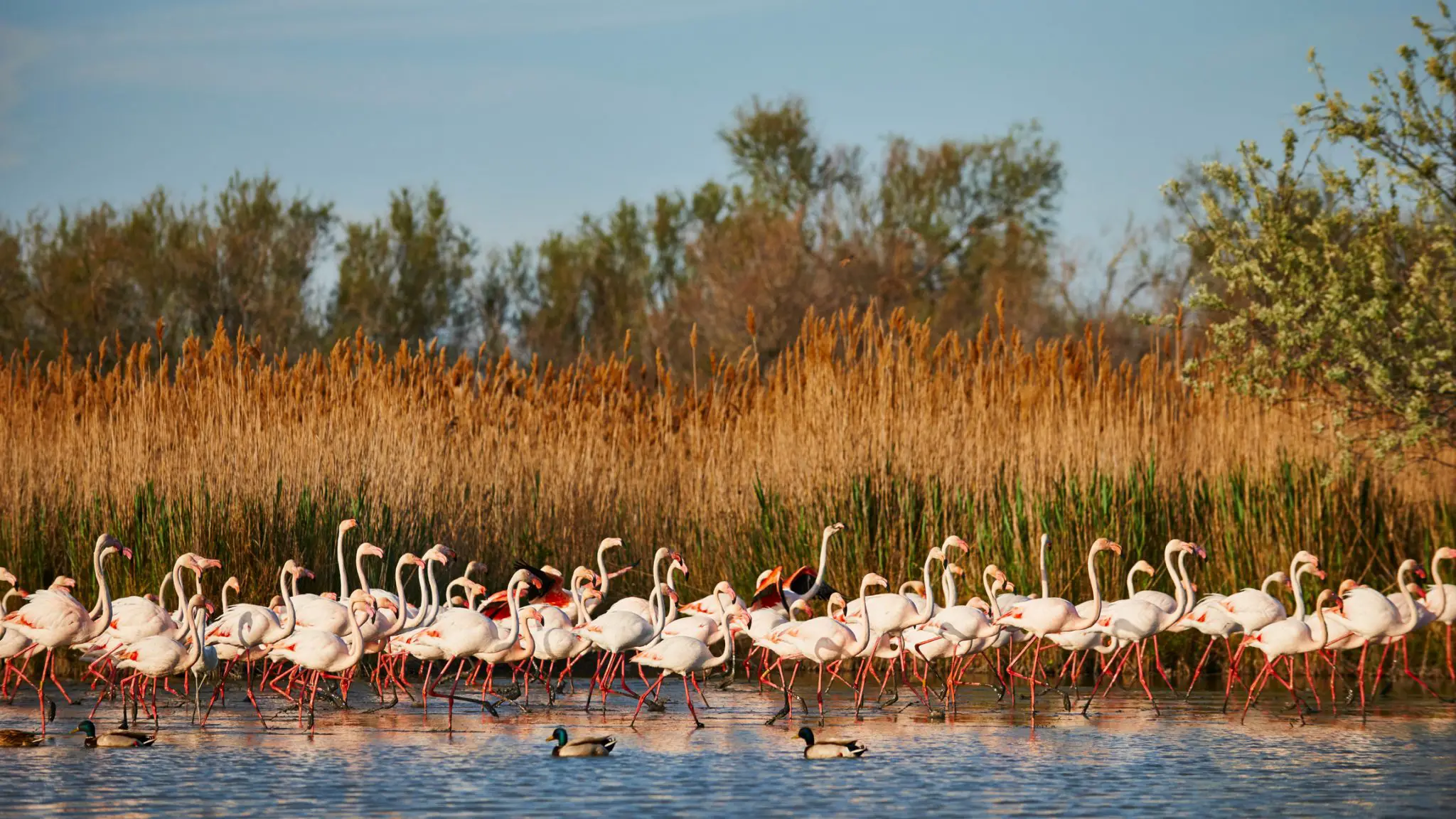The Parc Naturel régional de Camargue was established in 1970. Its saline ponds are home to 400 bird species including the white stork, herons, bitterns, glossy ibis, and the black-winged stilt.
It was the greater flamingo that we were most keen to see but we didn’t know if we would see any at that time of year, but we actually did see many flamingoes in March.
We rented a car which gave us the freedom to drive around and stop when we saw wildlife that we were interested in. The roads were quite quiet when we came but I imagine they get much busier in the summer when people want to escape to the countryside.
Mammals such as wild boar, fox, beaver, coypu, badger and polecat can be found here, as well as their native horse, the white Camarguais. We spotted a few of the white horses, although not all of them were roaming free like this one. They are one of the most ancient breeds of horses, surviving here as they are quite hardy and can travel long distances.
There are also ancient native bulls, used for bull-running. We didn’t see any of those, clearly, we were blind-sighted by the beauty of the horses. Although, they have an aggressive temperament as fighters, so are probably best avoided.
We had set our sat-nav to Saintes-Maries-de-la-Mer which is a seaside resort that is the capital of the Camargue. The road cuts straight through the national park, so we could look out for wildlife. We had a few pleasant surprises, one of which was a sighting of a beaver.
Beavers are so incredible and important to the landscape because they are ecosystem engineers, also known as a ‘keystone species’.
They benefit the wildlife around them by creating vital wetland habitat and reducing flood risks in rivers by slowing down the water. They also help to manage woodlands by cutting down trees and allowing different plants to thrive. Their herbivorous diet consists of grass and plants so they are no threat to fish stocks.
They help humans by improving water quality, reducing river erosion and stabilising water tables.
Once we got to Saintes-Maries-de-la-Mer, we ate some lunch. It was a cute place, right on the beach and geared towards tourists. The great thing was that we were staying in Carcassonne so we got to drive back through the national park again.
We only spent half a day driving around the park, but I would advise spending more time here. The landscape is beautiful and as a third of it is marshland, there are so many opportunities to see wildlife, especially birds. It has the advantage of being on the fly path to Africa so it’s a great place for migrating birds to rest and feed.
On our drive back we were greeted by a Bonelli’s eagle sat on a road sign. Now there’s something you don’t see in the UK. It’s incredible that you can visit the southern coast of Europe and see so many species that you don’t get in the north.
France is so close to many places in Europe and so easy to visit. This national park is definitely one of my favourite parts of this gorgeous country.
